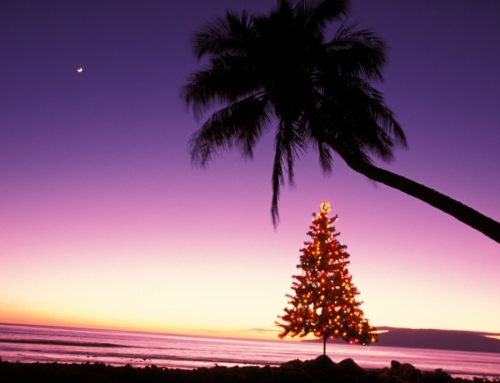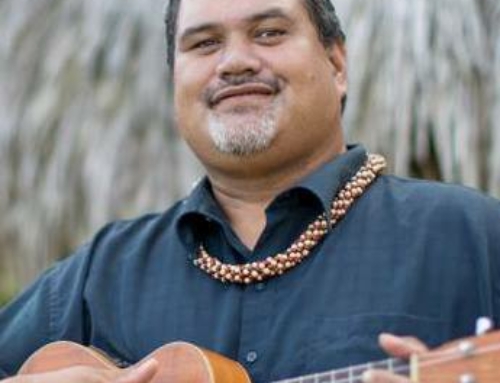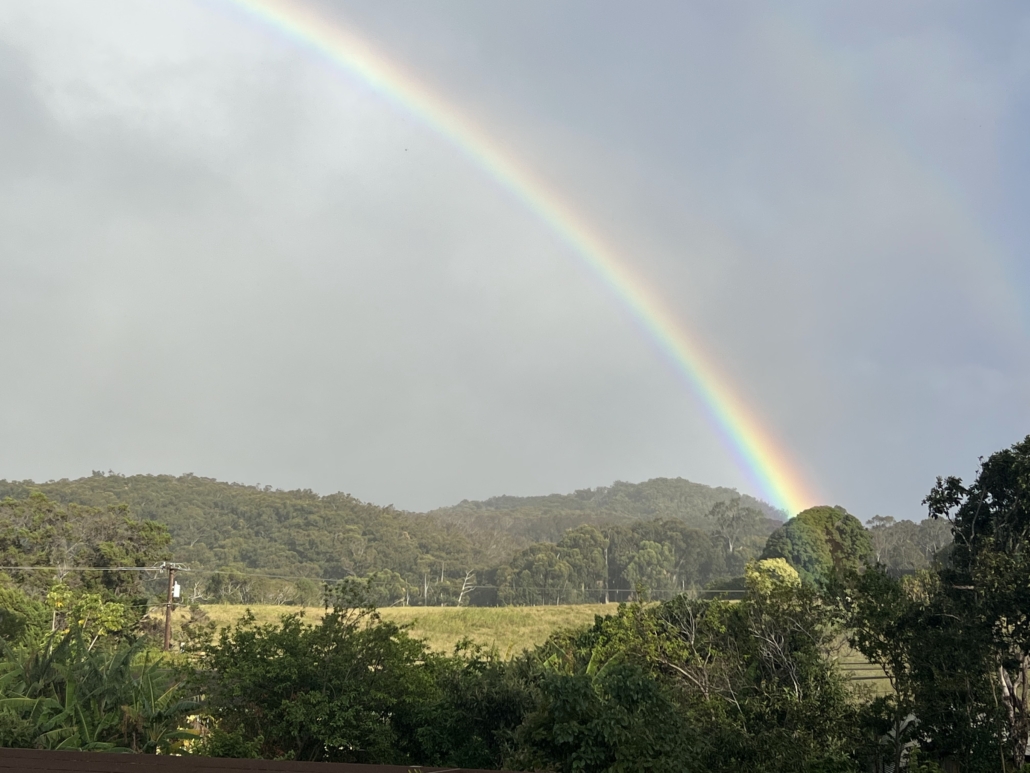
Everyone will see a rainbow in their lifetime, yet rainbows never cease to amaze us with their beauty and symbology of hope. Have you ever seen a person hastily pulling over to the side of the road only to jump out to capture a picture of a beautiful, bright rainbow in the sky?
Kermit the Frog’s famous song says it all. https://www.youtube.com/watch?v=WS3Lkc6Gzlk
In Hawai’i, ānuenue (the rainbow) has special cultural significance.
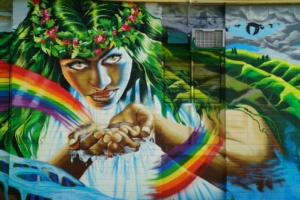
Photo credits: https://talesofhawaii.net/portfolio/xi-kahalaopuna-princess-of-manoa/
The Hawaiian Legend of KAHALAOPUNA, The Rainbow Maiden
According to a Hawaiian legend, Kahalaopuna is known as the Rainbow Maiden, born of the divine wind and rain of Mānoa Valley. Since ancient times the valley has been regarded as “the royal palace of rainbows,” where the beautiful Rainbow Maiden can be seen playing wherever the light of the sun touches the misty rain. Kahalaopuna was so beautiful that a rainbow followed her wherever she went.” “Her cheeks were so red and her face so bright that a glow emanated therefrom which shone through the thatch of her house when she was in.
She was betrothed to a chief from Kailua named Kauhi. But the fame of her beauty spread, and ill-meaning, envious men sowed rumors of shame. Despite his fiancée’s innocence, Kauhi became enraged with jealousy, and he killed her with a cone of hala nuts, then buried her body hastily.
As soon as he was gone, a large pueo (owl – a god and a relative of Kahalaopuna) immediately started digging out the body and restored life back to Kahalaopuna. She followed Kauhi, trying to reconcile. He killed her three more times! The pueo brought her back to life each time.
The fifth time Kauhi buried her far away and deep under the roots of a large koa tree. Now the owl worked so hard yet was unable to scratch the earth away and finally had no other choice but to abandon the girl. However, there had been a witness to this last murder and failed rescue attempt. A little bird named elepaio flew to Kahalaopuna’s parents and informed them. They prepared to visit the koa tree and find her remains.
Meanwhile, the girl’s apparition appeared for Chief Mahana, who, as directed by his vision, also went to the koa tree and found her body still warm. With the help of his spirit sisters, he brought her back to life and gradually she healed from the ordeal. Mahana loved her and cared for her. Kauhi, this time, didn’t know that she had returned to life. Yet when Mahana asked for her hand, Kahalaopuna still felt under the obligation to marry Kauhi. In secret, with his brother and her parents, Mahana planned to kill the murderous fiancé. The two rivals met in a trial, and Mahana, who knew the truth, won. Kauhi, as well as the two chiefs who had spread the disastrous rumors, were baked in ground ovens and Mahana received Kahalaopuna as his wife. They were happy for two years, till Kauhi, in the form of a shark, devoured her. This time forever.
Kahalaopuna and her family return to Mānoa in their guardian forms as well: Kahalaopuna as the beautiful ānuenue that continues to grace Mānoa Valley; her grandparents, Akaaka and Nalehuaoakaaka as the neighboring ridges; her mother Kuahine (Tuahine) as the rain of Mānoa; and her father Haukani as Mānoa’s wind.
And as of today, you can still find the spirit of Kahalaopuna (the Princess of Mānoa) in the ānuenue spanning Mānoa Valley.
And so, Ānuenue is so beautiful that a rainbow follows her wherever she goes, bringing good luck and prosperity. Since ancient times the valley has been regarded as “the royal palace of rainbows” and it symbolizes the presence of gods or chiefs. One proverb commented, “The royal eyes rest above,” meaning that when the rainbows appear in the sky, the gods are watching the chiefs. Even when no chiefs were around, rainbows that were predominately red were considered by some people to be a sign that their ‘aumakua or guardian ancestor spirits were watching over them.
More About Ānuenue in Hawai’i
Further, according to Hawaiian Mythology studies, “the rainbow is also perceived as the pathway that the souls of the dead take to travel to the heavenly realms. The souls have to walk on the rainbow path to pass through Kuaihelani, a mysterious floating island, which translates to “supporting the heavens or spiritual” to reach the sacred land of Nu’umealani, the bright, elevated, and fragrant land of ‘the heavenly one’. The rainbow is thus a symbol of transformation, and those who can freely travel between the upper world and the lower reaches live like gods among humans, enjoying earthly prosperity and abundance. Featured as a pathway between dimensions in Hawaiian mythology as it does in various cultures around the world, it also acts as a footstool for Malanaikuaheahea, the wife of the legendary transpacific voyager and astronomer whose name, Maliki’i is also the Hawaiian term for the Pleiades star cluster from which the first Hawaiians came to earth.”
Rainbows can foretell misfortune, be a presage of death, or announce that a chief is journeying, watched over by the gods. It is used as a symbol; as a bridge to the world for spirituality and healing.
The Hawaiian language has many words for all the different types of rainbows. Hakahakaea is the rare, greenish rainbow. The low, earth-clinging rainbows are called ka lehopulu. A standing rainbow shaft is ke kāhili. The varied rainbows around the sun or moon are ka luakālai, luahoana, luakālai lani. A barely visible rainbow is called punakea. And there are many more. Hawaiians are very connected to the ‘aina, and their language poetic. This is why one catch-all word for rainbow won’t do.
Hawai’i has been called the Rainbow Capital of the world, and carries the nickname “The Rainbow State”. The University of Hawai’i basketball team is called the Rainbow Warriors, and the stunning waterfall outside of Hilo on the Big Island of Hawai’i is aptly named Waiānuenue, rainbow (seen in) water. We have the Rainbow Eucalyptus trees growing here, and rainbows have been on our license plates since 1991.
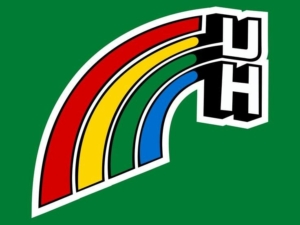
Photo credits: https://www.pinterest.ph/pin/470626229805788322/
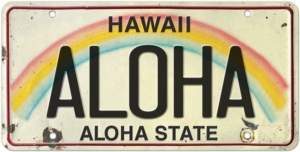
Photo credit: https://m.media-amazon.com/images/I/61fpWJ-ZkuL._AC_SL1000_.jpg
Other Cultural Beliefs
Apart from the Hawaiian beliefs, other countries have their own views about rainbows.
One of the famous ones is the Irish Leprechaun, known as a mischievous faery creature who likes to make shoes and store gold in a pot that they hide at the end of a rainbow. Because rainbows don’t come around every day, it’s a good place to hide gold.
The Norse saw the rainbow as Bifrost (sometimes Bilröst or Bivrost) the burning rainbow bridge that reaches between Midgard (the world) and Asgard, the realm of the gods.
Most Indo-European pagan cultures have some variation of this tale from the Norse. The Rainbow is a bridge between ages of enlightenment, or between the planes of spiritual realms. Some myths see the rainbow as a bridge of growth for an individual along their mission toward enlightenment.
In some of these legends, a complete rainbow, seen in its full circle is an omen of the circle of life. In this legend, someone is about to be born, or someone is about to die. In variations, the cycle might concern a phase in one’s life, a mission, a journey, a war, a battle, and so on. The cycle of an event that’s about to begin or coming near its end.
In Greco-Roman mythology, the rainbow was considered to be a path made by a messenger (Iris) between Earth and Heaven.
In some traditions of Tibetan Buddhism or Dzogchen, a rainbow body is believed to be attainable through practice.
In Chinese mythology, the rainbow was a slit in the sky sealed by the goddess Nüwa using stones of five different colors.
In the Christian Bible’s Genesis flood narrative, after creating a flood to wash away humanity’s corruption, God put the rainbow in the sky as a sign of his promise that he would never again destroy the earth with a flood.
In Amazonian cultures, rainbows are associated with malign spirits that cause harm, such as miscarriages and (especially) skin problems. In the Amuesha language of central Peru, certain diseases are called ayona’achartan, meaning “the rainbow hurt my skin”. A tradition of closing one’s mouth at the sight of a rainbow in order to avoid disease appears to pre-date the Incan empire.[4][5]
In New Age and Hindu philosophy, the seven colors of the rainbow represent the seven chakras, from the first chakra (red) to the seventh chakra (purple).
Count your rainbows, not your thunderstorms.
During difficult times, we tend to overthink and worry about the future. Rainbows are the perfect metaphor for better times ahead.
Always remember, the greater your storm, the brighter your rainbow. You’ll never find a rainbow if you’re looking down.
Hawai’i’s abundant rainbows await.
MAUI RAINBOWS by Kathy McCartney
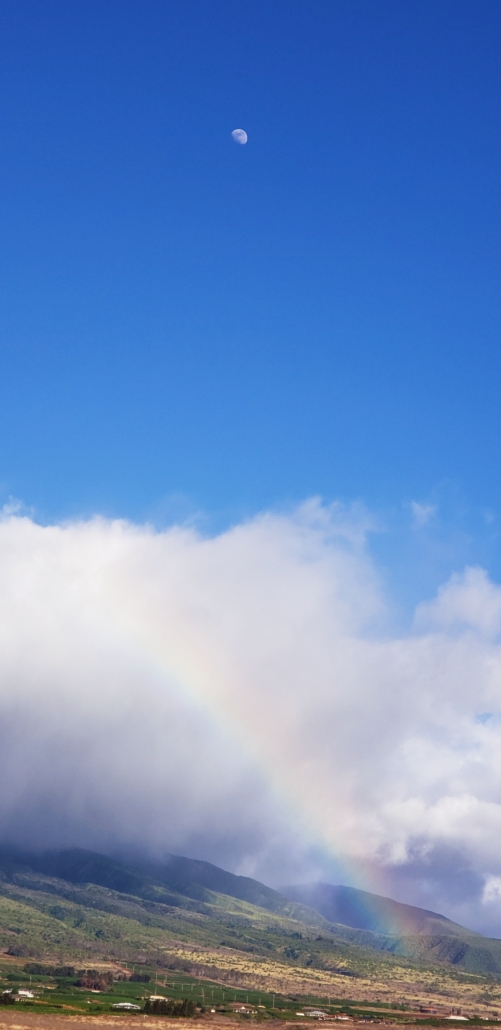
Photo credits: Kathy McCartney
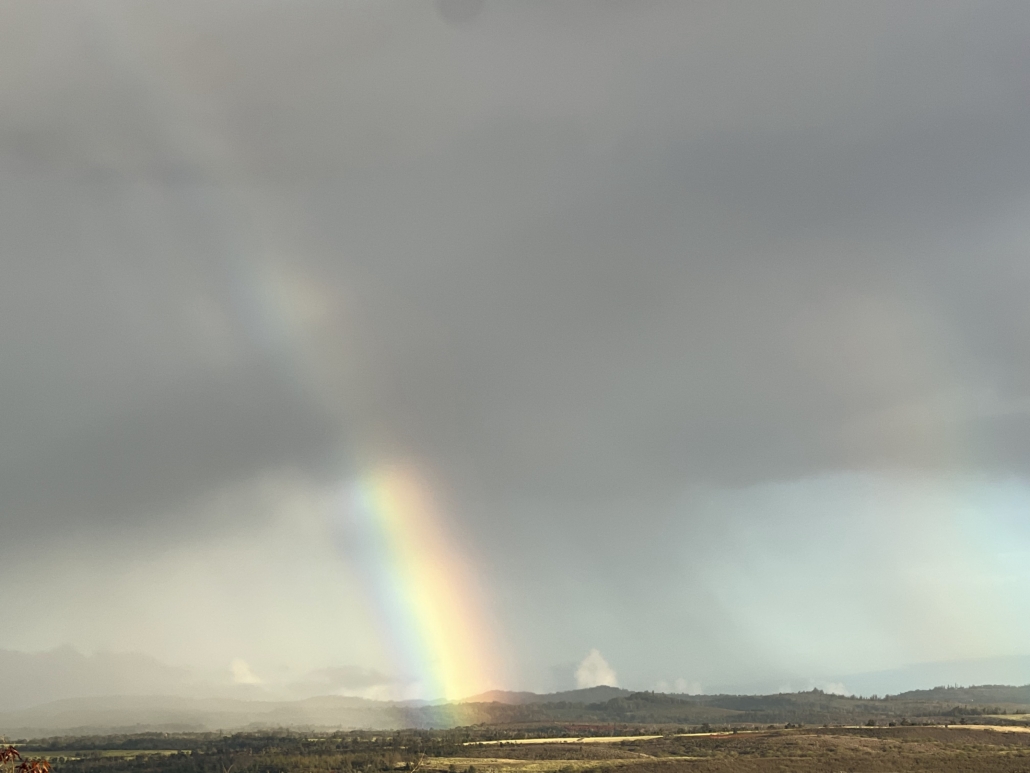
Photo credits: Kathy McCartney
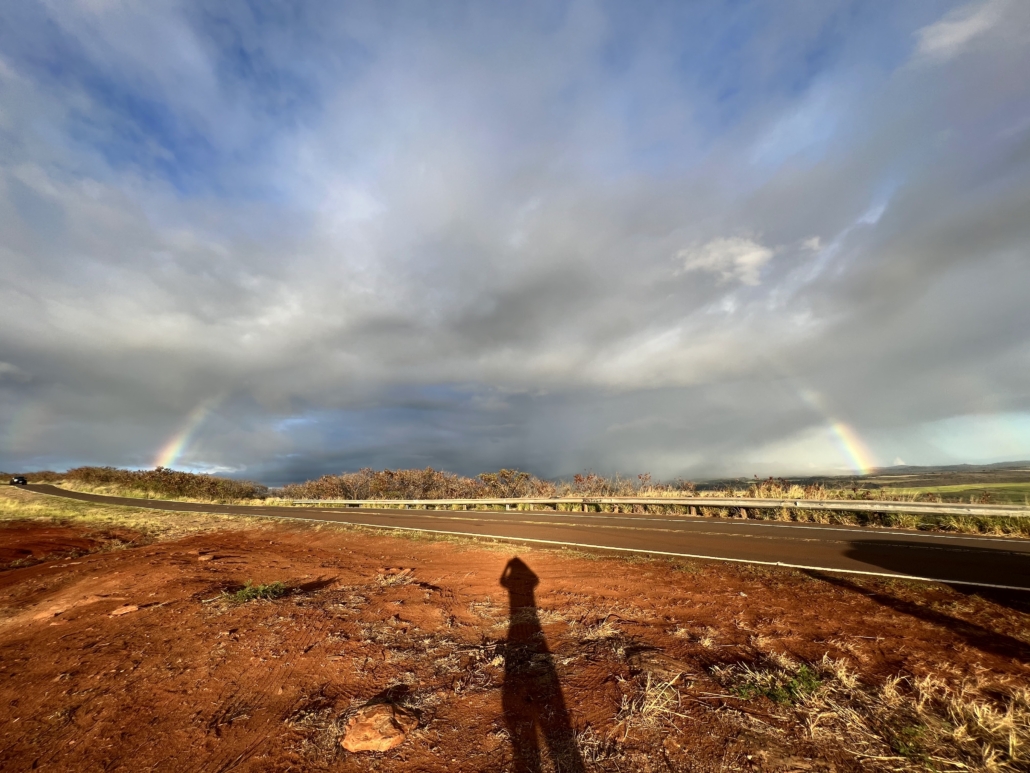
Photo credits: Kathy McCartney

